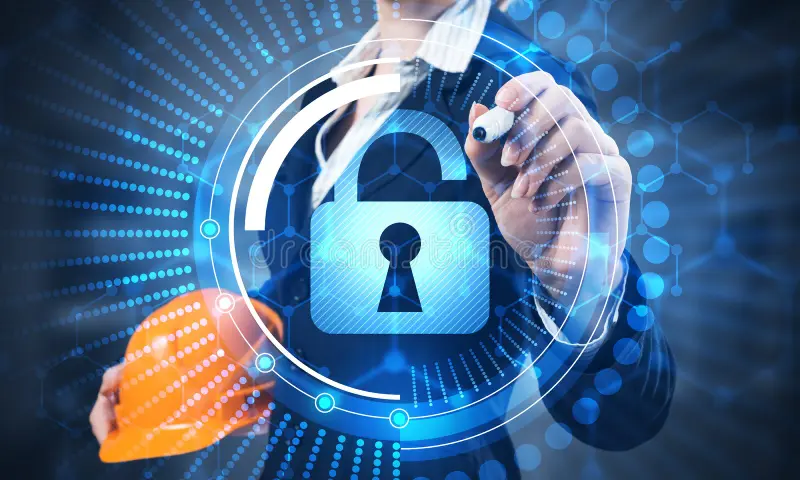In today’s digital world, it’s more important than ever to lock down our digital doors against cyber threats. That’s why taking a cyber security course is so valuable, especially for those in Pune looking to protect their data. A Cyber Security Certification Course can provide the essential knowledge and skills to keep hackers at bay. By learning best practices for encryption, access controls, network security, and incident response, you’ll be prepared to face the cyber challenges of the 21st century. So consider enrolling in a cyber security course in Pune to help secure our digital future. With the right training, we can all contribute to stronger cyber defenses.
Table of Contents:
- Introduction to Cybersecurity
- Understanding Digital Threats
- Importance of Cybersecurity Measures
- Common Cybersecurity Vulnerabilities
- Best Practices for Securing Digital Assets
- Implementing Robust Cybersecurity Policies
- Cybersecurity Tools and Technologies
- Building a Cybersecurity Culture
- Cybersecurity Challenges and Future Trends
- Conclusion: Safeguarding Your Digital Future
Introduction to Cybersecurity
In today’s digital age, where technology plays a crucial role in our everyday lives, cybersecurity has become more important than ever. With the increasing reliance on digital platforms for communication, transactions, and data storage, the need to protect our digital assets from cyber threats has never been more critical. Cybersecurity refers to the practice of protecting computer systems, networks, and data from unauthorized access, cyber attacks, and data breaches. In this blog post, we will explore the various aspects of cybersecurity, from understanding digital threats to implementing robust cybersecurity policies, and discuss the importance of safeguarding your digital future.
Understanding Digital Threats
Cyber threats come in various forms, ranging from malware and phishing attacks to ransomware and data breaches. Malware, short for malicious software, is a type of software designed to damage or disrupt computer systems, while phishing attacks involve tricking users into revealing sensitive information, such as passwords or credit card details. Ransomware is a type of malware that encrypts files on a computer system and demands a ransom in exchange for decrypting the files. Data breaches occur when hackers gain unauthorized access to sensitive data, such as personal information or financial records. Understanding these digital threats is essential for developing effective cybersecurity measures to protect against them.
Importance of Cybersecurity Measures
The importance of cybersecurity measures cannot be overstated, as the consequences of a cyber attack can be devastating. A data breach can result in financial losses, reputational damage, and legal implications, not to mention the potential impact on individuals’ privacy and security. By implementing robust cybersecurity measures, organizations can reduce the risk of cyber attacks and safeguard their digital assets. Cybersecurity measures can include firewalls, antivirus software, encryption, multi-factor authentication, and regular security audits. It is essential for organizations to invest in cybersecurity to protect their data and maintain the trust of their customers.
Common Cybersecurity Vulnerabilities
Despite the advancements in cybersecurity technologies, there are still common vulnerabilities that cyber attackers can exploit. Some of the most common cybersecurity vulnerabilities include weak passwords, unpatched software, insecure network configurations, and lack of employee training. Weak passwords are a common entry point for cyber attackers, as they can easily guess or crack passwords that are not strong enough. Unpatched software refers to software that has not been updated with the latest security patches, leaving it vulnerable to known exploits. Insecure network configurations can allow cyber attackers to gain unauthorized access to a network, while lack of employee training can lead to human error and security breaches.
Best Practices for Securing Digital Assets
To secure digital assets effectively, organizations should follow best practices for cybersecurity. Some of the best practices for securing digital assets include:
- Use strong passwords: Encourage employees to use complex passwords that are difficult to guess or crack.
- Update software regularly: Ensure that all software and systems are updated with the latest security patches to protect against known vulnerabilities.
- Implement encryption: Encrypt sensitive data to protect it from unauthorized access.
- Use multi-factor authentication: Require users to provide multiple forms of identification, such as a password and a one-time code, to access sensitive information.
- Conduct regular security audits: Perform regular security audits to identify and address any vulnerabilities in your systems.
Implementing Robust Cybersecurity Policies
In addition to following best practices for securing digital assets, organizations should also implement robust cybersecurity policies to protect against cyber threats. Cybersecurity policies should outline the organization’s approach to cybersecurity, including roles and responsibilities, incident response procedures, and compliance requirements. It is essential for organizations to educate employees about cybersecurity best practices and ensure that they are aware of their role in protecting the organization’s digital assets. By implementing robust cybersecurity policies, organizations can create a culture of security and reduce the risk of cyber attacks.
Cybersecurity Tools and Technologies
There are various cybersecurity tools and technologies available to help organizations protect their digital assets. Some of the most common cybersecurity tools include:
- Firewalls: Firewalls are a network security system that monitors and controls incoming and outgoing network traffic based on predetermined security rules.
- Antivirus software: Antivirus software is a program designed to detect and remove malware from a computer system.
- Encryption: Encryption is the process of encoding data to protect it from unauthorized access.
- Intrusion detection systems: Intrusion detection systems are software or hardware devices that monitor network traffic for suspicious activity.
- Security information and event management (SIEM) systems: SIEM systems collect and analyze security data from various sources to detect and respond to security incidents.
By leveraging these cybersecurity tools and technologies, organizations can enhance their security posture and protect their digital assets from cyber threats.
Building a Cybersecurity Culture
Building a cybersecurity culture within an organization is essential for creating a strong defense against cyber threats. A cybersecurity culture involves educating employees about cybersecurity best practices, promoting a culture of security awareness, and fostering a sense of responsibility for protecting digital assets. Organizations should provide regular cybersecurity training to employees, conduct security awareness campaigns, and encourage employees to report any suspicious activity. By building a cybersecurity culture, organizations can empower employees to take an active role in protecting the organization’s digital assets and reduce the risk of cyber attacks.
Cybersecurity Challenges and Future Trends
While cybersecurity measures have come a long way in recent years, there are still challenges that organizations face in protecting their digital assets. Some of the common cybersecurity challenges include:
- Evolving cyber threats: Cyber attackers are constantly evolving their tactics and techniques, making it challenging for organizations to keep up with the latest threats.
- Insider threats: Insider threats, such as employees or contractors with malicious intent, pose a significant risk to organizations’ cybersecurity.
- Compliance requirements: Organizations must comply with various cybersecurity regulations and standards, which can be complex and time-consuming to navigate.
Looking ahead, the future of cybersecurity will likely involve advancements in technologies such as artificial intelligence, machine learning, and automation. These technologies can help organizations detect and respond to cyber threats more effectively and efficiently. Additionally, cybersecurity professionals will need to continue to adapt and evolve their skills to stay ahead of cyber attackers and protect organizations’ digital assets.
Conclusion: Safeguarding Your Digital Future
In conclusion, cybersecurity is a critical aspect of protecting our digital assets in today’s interconnected world. By understanding digital threats, implementing robust cybersecurity measures, and building a cybersecurity culture, organizations can reduce the risk of cyber attacks and safeguard their digital future. It is essential for organizations to invest in cybersecurity tools and technologies, follow best practices for securing digital assets, and stay informed about cybersecurity challenges and future trends. By taking a proactive approach to cybersecurity, organizations can protect their data, maintain the trust of their customers, and secure their digital future. Remember, locking down the digital doors with cybersecurity is key to staying safe in the digital age.





